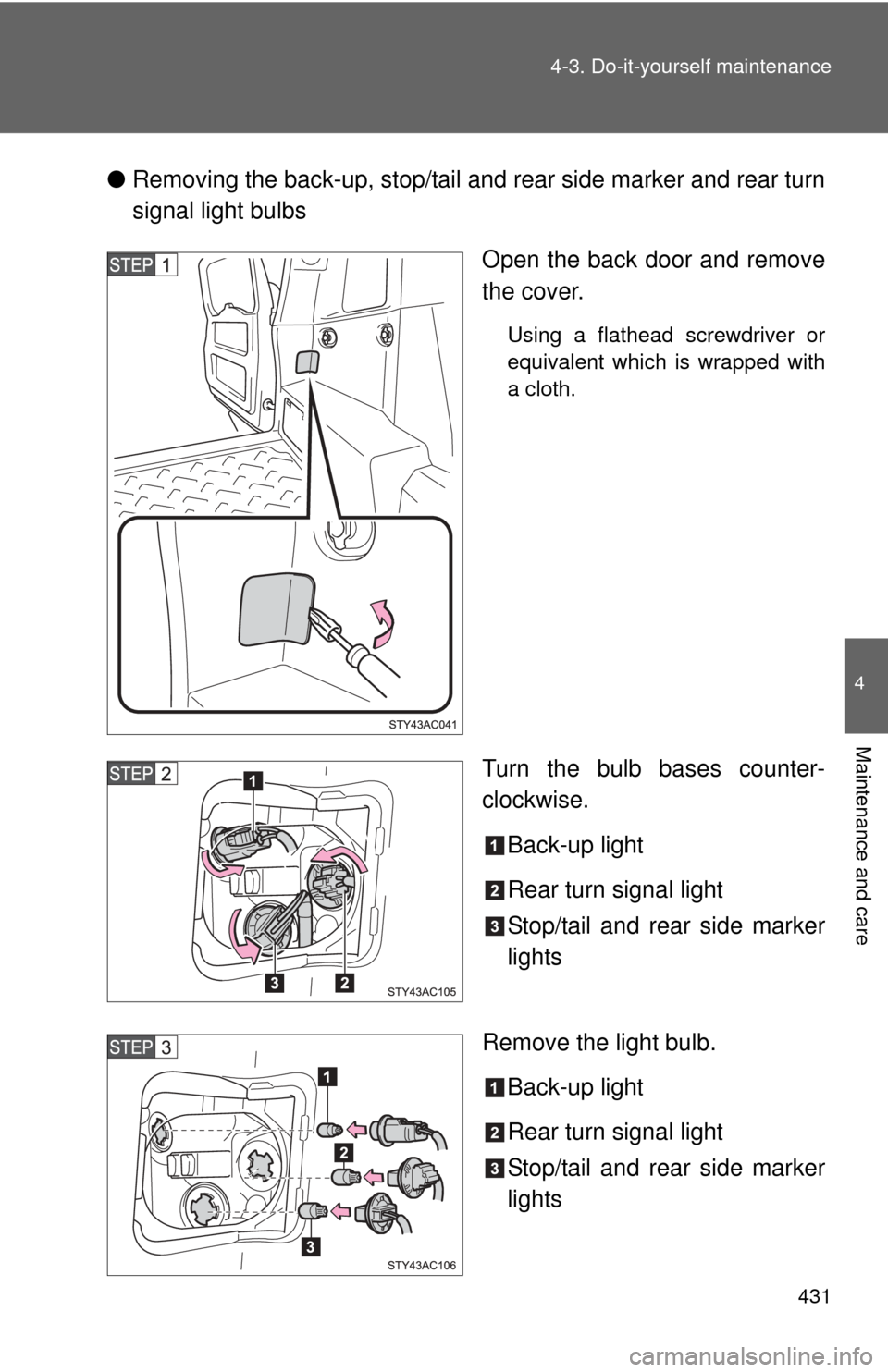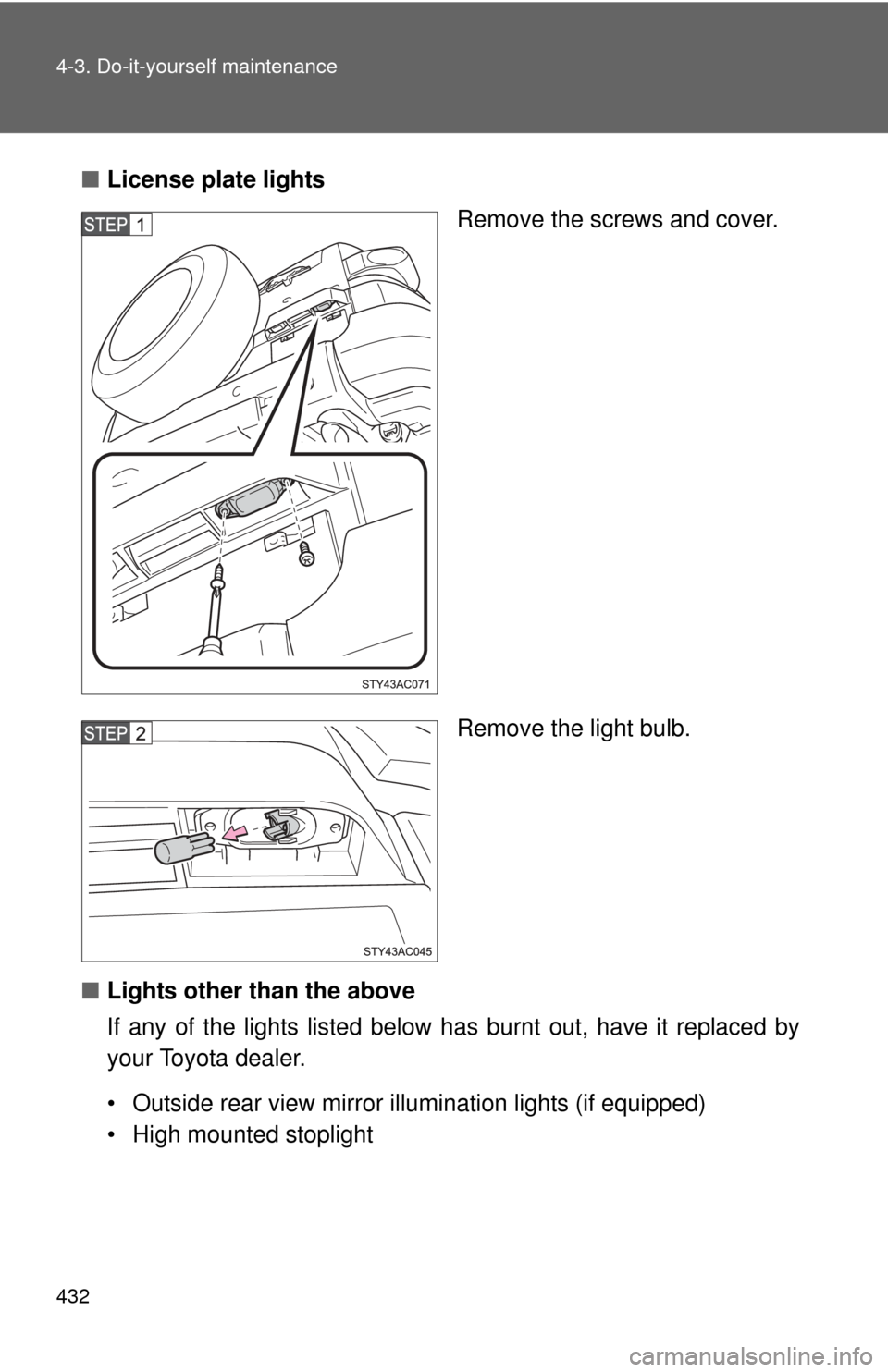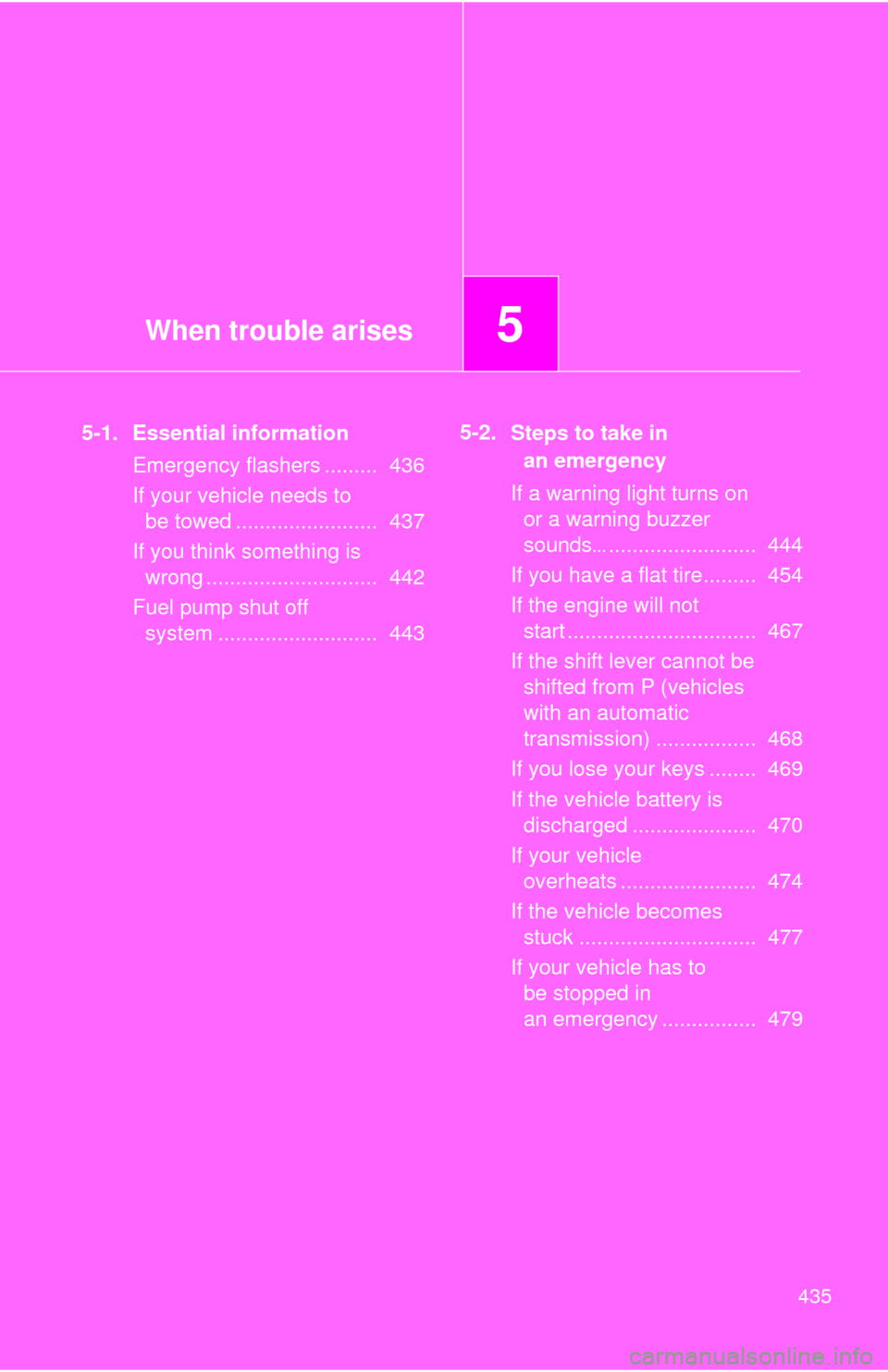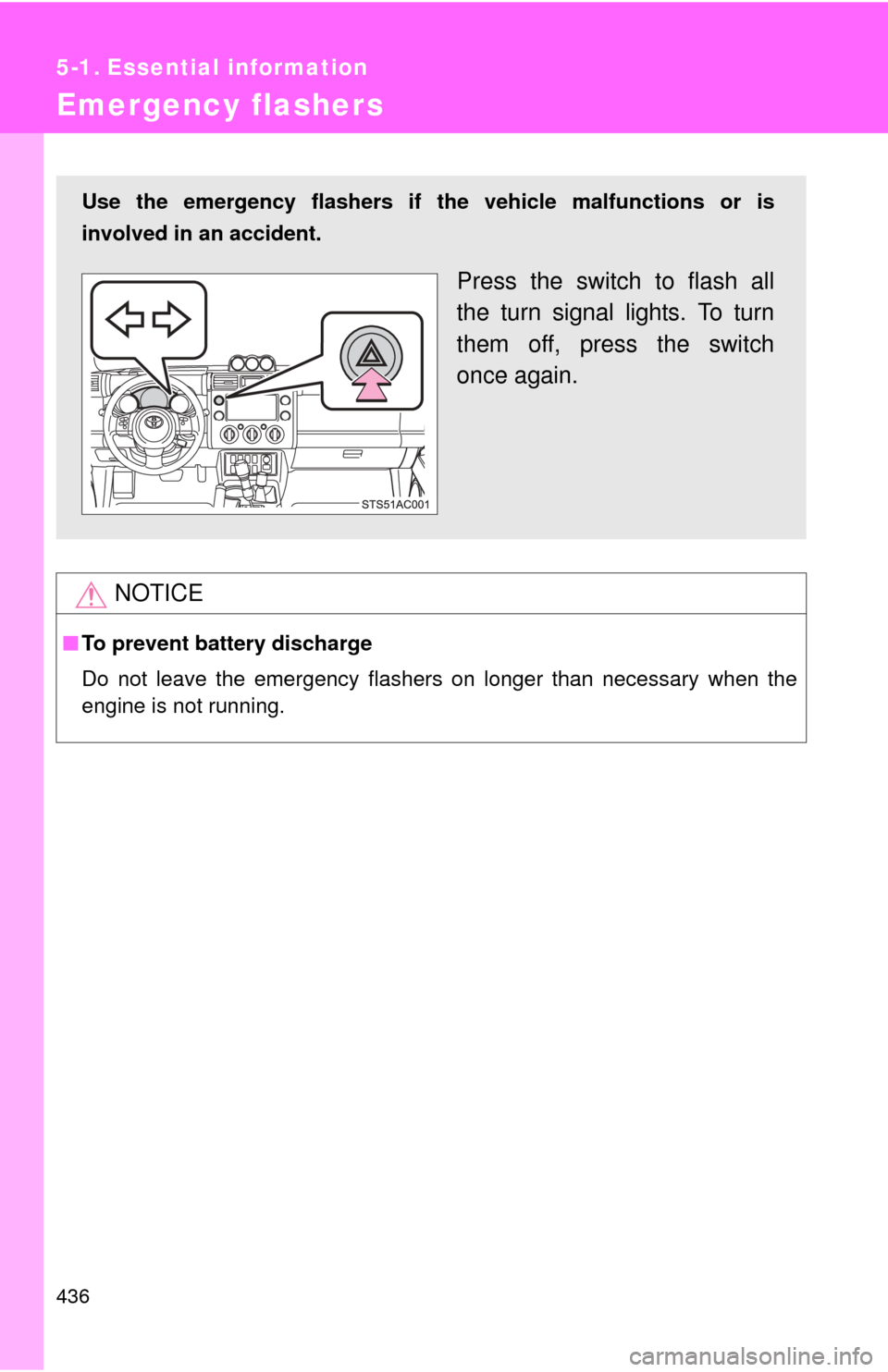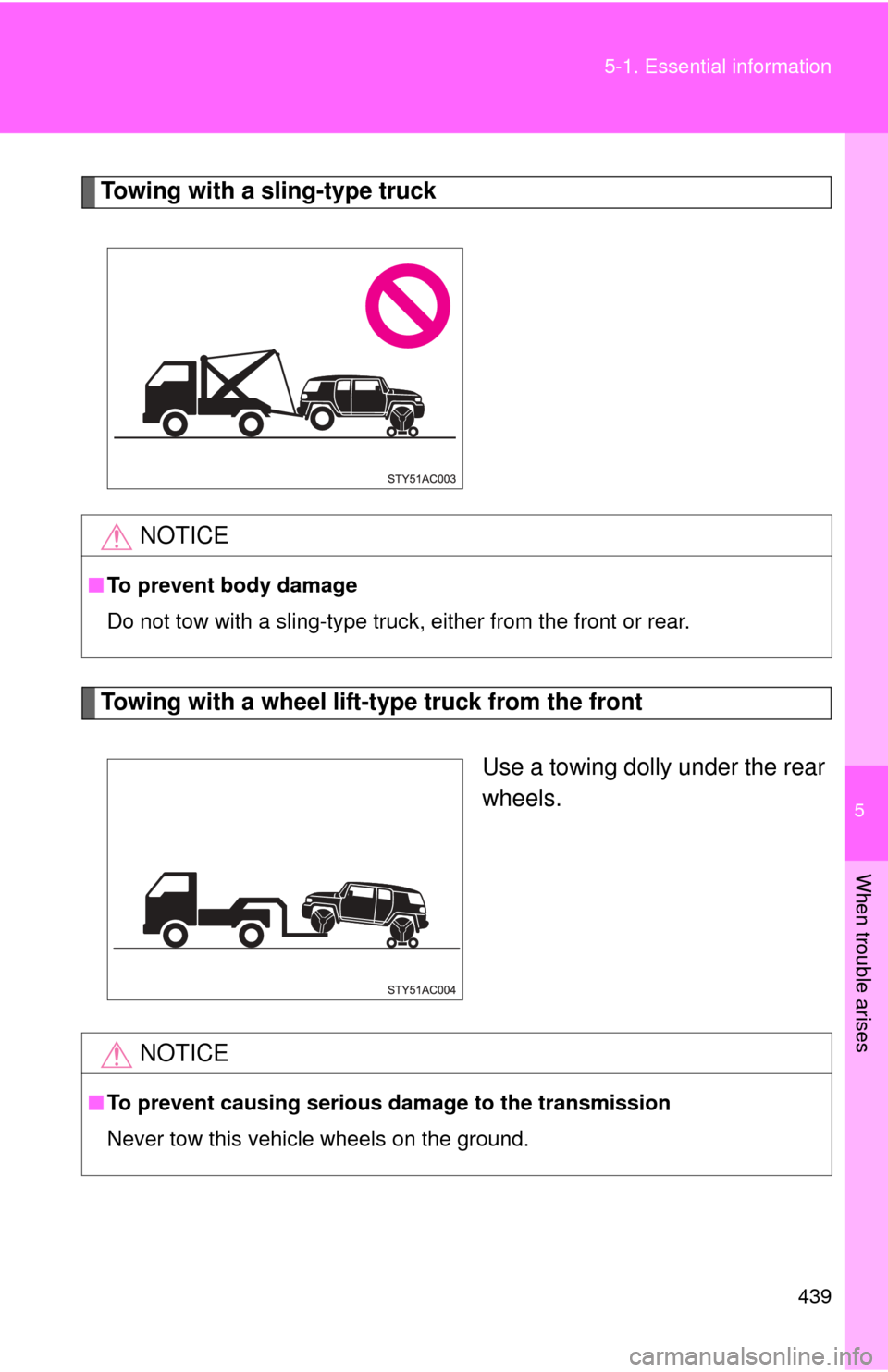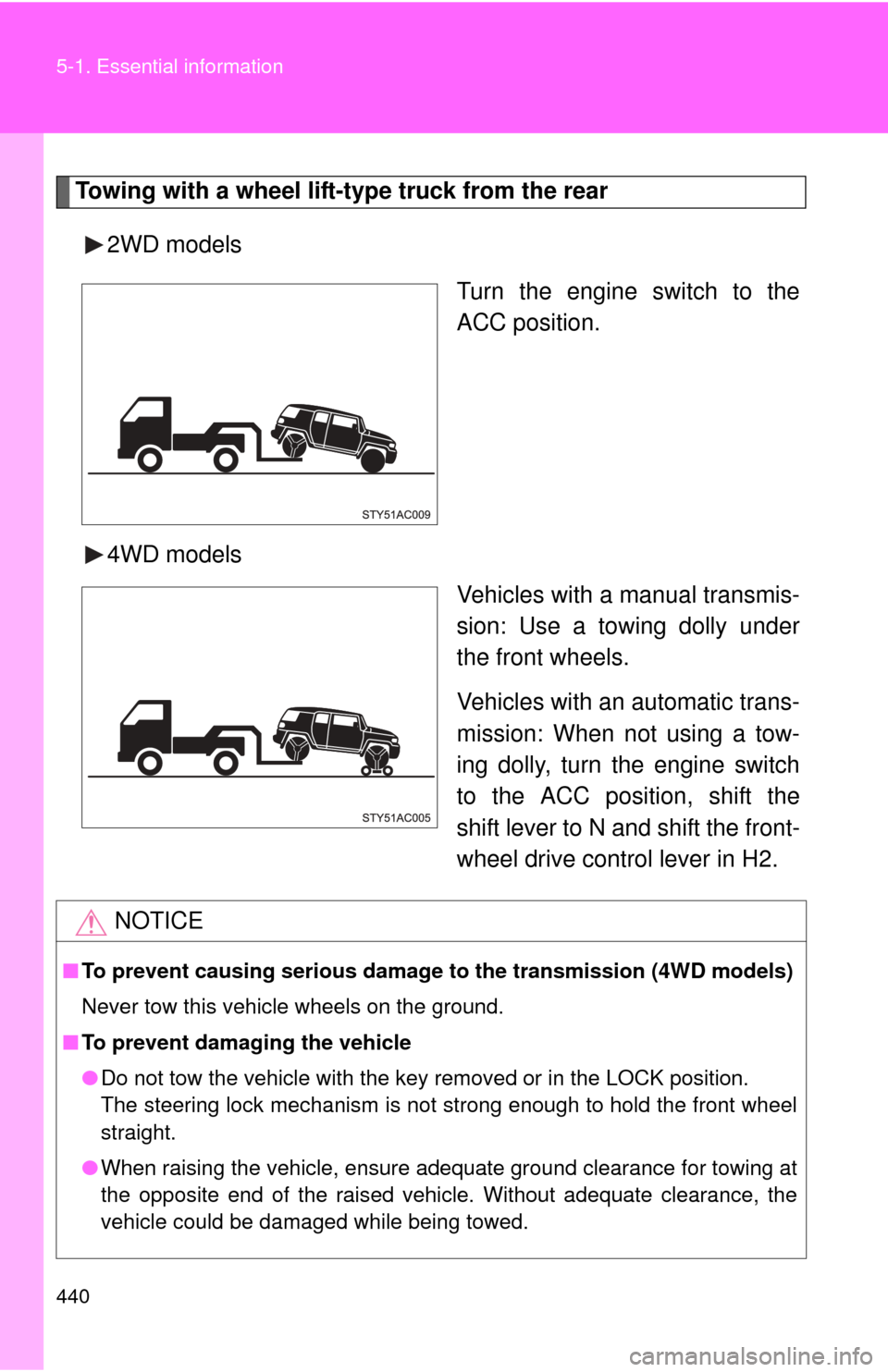TOYOTA FJ CRUISER 2012 1.G Owners Manual
FJ CRUISER 2012 1.G
TOYOTA
TOYOTA
https://www.carmanualsonline.info/img/14/6373/w960_6373-0.png
TOYOTA FJ CRUISER 2012 1.G Owners Manual
Trending: headlight bulb, lights, roof rack, air filter, radio, wheel bolts, maintenance
Page 431 of 540
431
4-3. Do-it-yourself maintenance
4
Maintenance and care
●
Removing the back-up, stop/tail and rear side marker and rear turn
signal light bulbs
Open the back door and remove
the cover.
Using a flathead screwdriver or
equivalent which is wrapped with
a cloth.
Turn the bulb bases counter-
clockwise.Back-up light
Rear turn signal light
Stop/tail and rear side marker
lights
Remove the light bulb. Back-up light
Rear turn signal light
Stop/tail and rear side marker
lights
Page 432 of 540
432 4-3. Do-it-yourself maintenance
■License plate lights
Remove the screws and cover.
Remove the light bulb.
■ Lights other than the above
If any of the lights listed below has burnt out, have it replaced by
your Toyota dealer.
• Outside rear view mirror illumination lights (if equipped)
• High mounted stoplight
Page 433 of 540
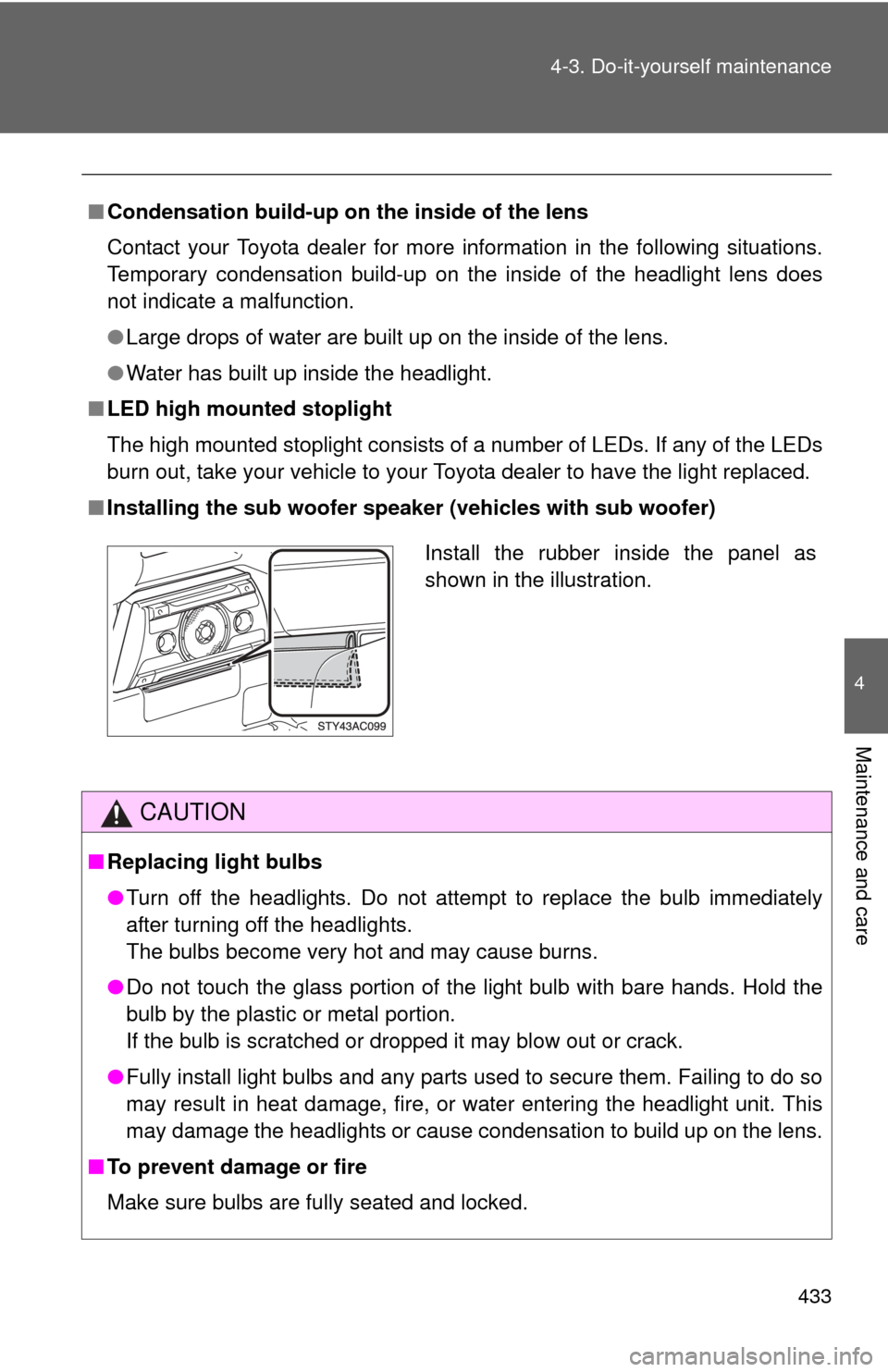
433
4-3. Do-it-yourself maintenance
4
Maintenance and care
■
Condensation build-up on th e inside of the lens
Contact your Toyota dealer for more information in the following situations.
Temporary condensation build-up on the inside of the headlight lens does
not indicate a malfunction.
● Large drops of water are built up on the inside of the lens.
● Water has built up inside the headlight.
■ LED high mounted stoplight
The high mounted stoplight consists of a number of LEDs. If any of the LEDs
burn out, take your vehicle to your Toyota dealer to have the light replaced.
■ Installing the sub woofer speaker (vehicles with sub woofer)
CAUTION
■Replacing light bulbs
●Turn off the headlights. Do not attempt to replace the bulb immediately
after turning off the headlights.
The bulbs become very hot and may cause burns.
● Do not touch the glass portion of the light bulb with bare hands. Hold the
bulb by the plastic or metal portion.
If the bulb is scratched or dropped it may blow out or crack.
● Fully install light bulbs and any parts used to secure them. Failing to do so
may result in heat damage, fire, or water entering the headlight unit. This
may damage the headlights or cause condensation to build up on the lens.
■ To prevent damage or fire
Make sure bulbs are fully seated and locked.
Install the rubber inside the panel as
shown in the illustration.
Page 434 of 540
434 4-3. Do-it-yourself maintenance
Page 435 of 540
When trouble arises5
435
5-1. Essential informationEmergency flashers ......... 436
If your vehicle needs to be towed ........................ 437
If you think something is wrong ............................. 442
Fuel pump shut off system ........................... 443 5-2.
Steps to take in
an emergency
If a warning light turns on or a warning buzzer
sounds
............................ 444
If you have a flat tire......... 454
If the engine will not start ................................ 467
If the shift lever cannot be shifted from P (vehicles
with an automatic
transmission) ................. 468
If you lose your keys ........ 469
If the vehicle battery is discharged ..................... 470
If your vehicle overheats ....................... 474
If the vehicle becomes stuck .............................. 477
If your vehicle has to be stopped in
an emergency ................ 479
Page 436 of 540
436
5-1. Essential information
Emergency flashers
NOTICE
■To prevent battery discharge
Do not leave the emergency flashers on longer than necessary when the
engine is not running.
Use the emergency flashers if th e vehicle malfunctions or is
involved in an accident.
Press the switch to flash all
the turn signal lights. To turn
them off, press the switch
once again.
Page 437 of 540
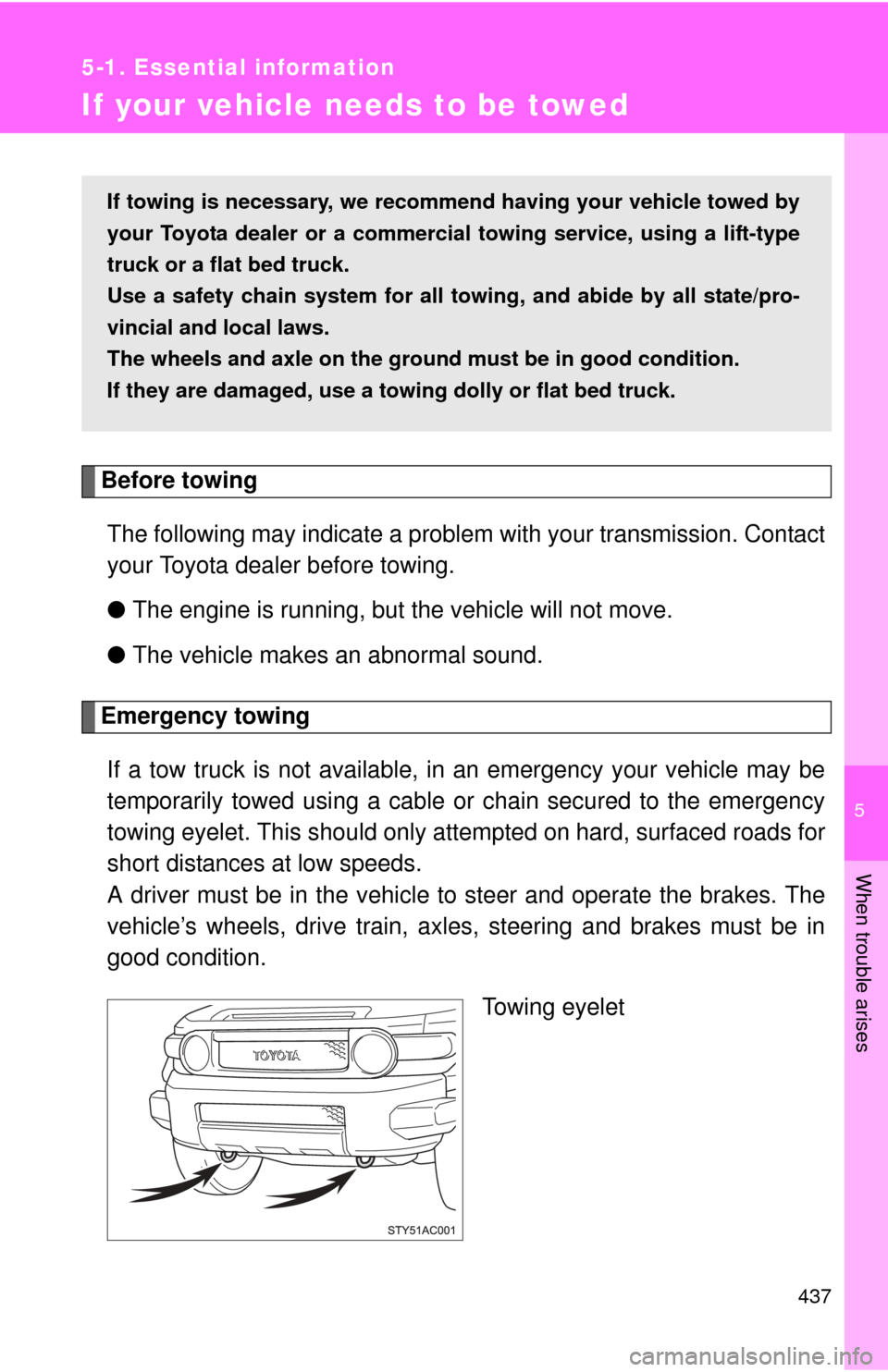
5
When trouble arises
437
5-1. Essential information
If your vehicle needs to be towed
Before towingThe following may indicate a problem with your transmission. Contact
your Toyota dealer before towing.
● The engine is running, but the vehicle will not move.
● The vehicle makes an abnormal sound.
Emergency towing
If a tow truck is not available, in an emergency your vehicle may be
temporarily towed using a cable or chain secured to the emergency
towing eyelet. This should only attempted on hard, surfaced roads for
short distances at low speeds.
A driver must be in the vehicle to steer and operate the brakes. The
vehicle’s wheels, drive train, axles, steering and brakes must be in
good condition.
Towing eyelet
If towing is necessary, we recommend having your vehicle towed by
your Toyota dealer or a commerci al towing service, using a lift-type
truck or a flat bed truck.
Use a safety chain system for all to wing, and abide by all state/pro-
vincial and local laws.
The wheels and axle on the groun d must be in good condition.
If they are damaged, use a towing dolly or flat bed truck.
Page 438 of 540
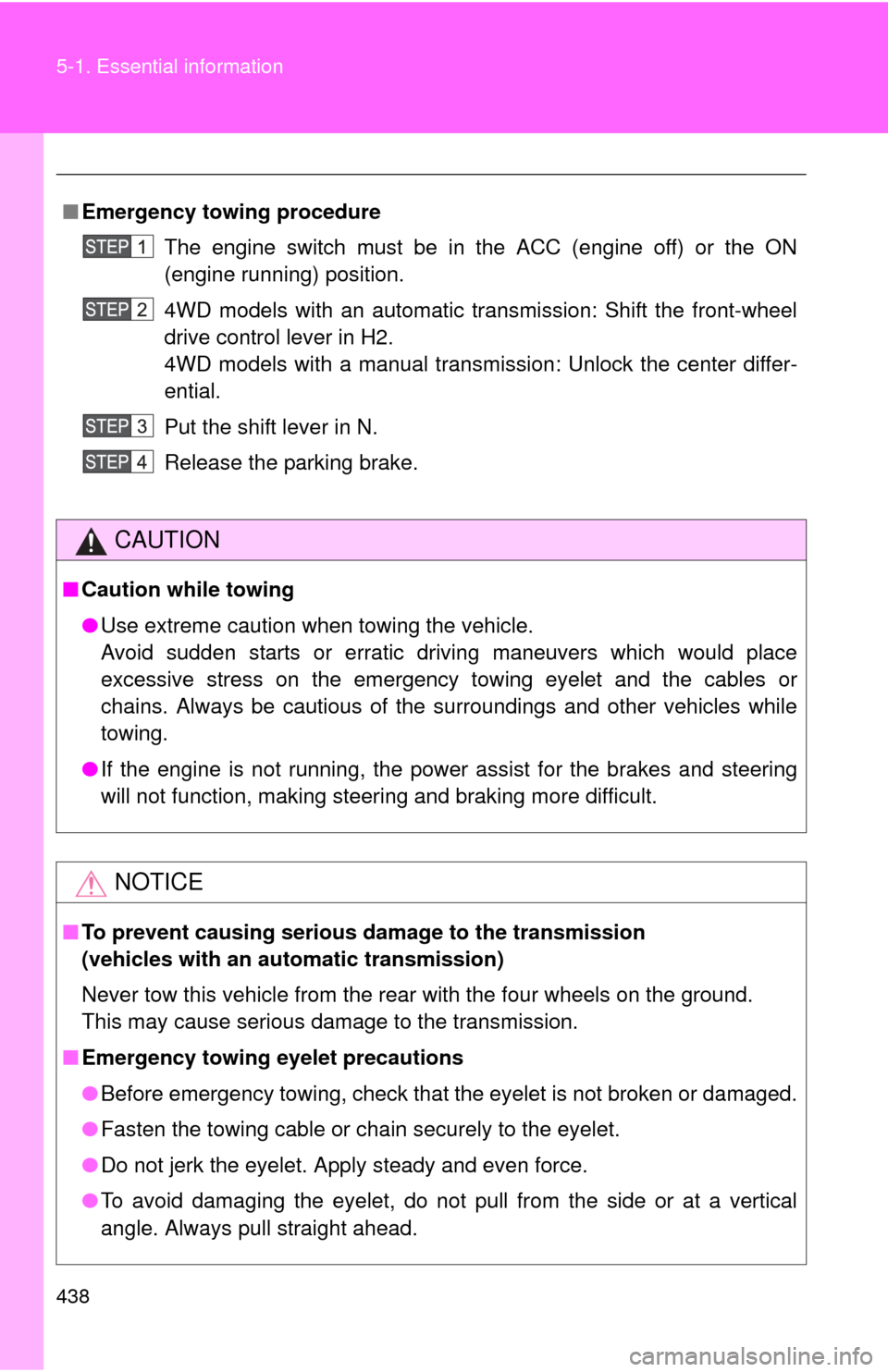
438 5-1. Essential information
■Emergency towin g procedure
The engine switch must be in the ACC (engine off) or the ON
(engine running) position.
4WD models with an automatic transmission: Shift the front-wheel
drive control lever in H2.
4WD models with a manual transmission: Unlock the center differ-
ential.
Put the shift lever in N.
Release the parking brake.
CAUTION
■ Caution while towing
●Use extreme caution when towing the vehicle.
Avoid sudden starts or erratic driving maneuvers which would place
excessive stress on the emergency towing eyelet and the cables or
chains. Always be cautious of the surroundings and other vehicles while
towing.
● If the engine is not running, the power assist for the brakes and steering
will not function, making steering and braking more difficult.
NOTICE
■To prevent causing serious dama ge to the transmission
(vehicles with an automatic transmission)
Never tow this vehicle from the rear with the four wheels on the ground.
This may cause serious damage to the transmission.
■ Emergency towing eyelet precautions
● Before emergency towing, check that the eyelet is not broken or damaged.
● Fasten the towing cable or chain securely to the eyelet.
● Do not jerk the eyelet. Apply steady and even force.
● To avoid damaging the eyelet, do not pull from the side or at a vertical
angle. Always pull straight ahead.
Page 439 of 540
5
When trouble arises
439
5-1. Essential information
Towing with a sling-type truck
Towing with a wheel lift-type truck from the front
Use a towing dolly under the rear
wheels.
NOTICE
■To prevent body damage
Do not tow with a sling-type truck, either from the front or rear.
NOTICE
■To prevent causing serious da mage to the transmission
Never tow this vehicle wheels on the ground.
Page 440 of 540
440 5-1. Essential information
Towing with a wheel lift-type truck from the rear2WD models Turn the engine switch to the
ACC position.
4WD models Vehicles with a manual transmis-
sion: Use a towing dolly under
the front wheels.
Vehicles with an automatic trans-
mission: When not using a tow-
ing dolly, turn the engine switch
to the ACC position, shift the
shift lever to N and shift the front-
wheel drive control lever in H2.
NOTICE
■To prevent causing serious damage to the transmission (4WD models)
Never tow this vehicle wheels on the ground.
■ To prevent damaging the vehicle
●Do not tow the vehicle with the key removed or in the LOCK position.
The steering lock mechanism is not strong enough to hold the front wheel
straight.
● When raising the vehicle, ensure adequate ground clearance for towing at
the opposite end of the raised vehicle. Without adequate clearance, the
vehicle could be damaged while being towed.
Trending: spark plugs, fuel type, instrument panel, interior lights, spare wheel, a trac function, turn signal bulb
